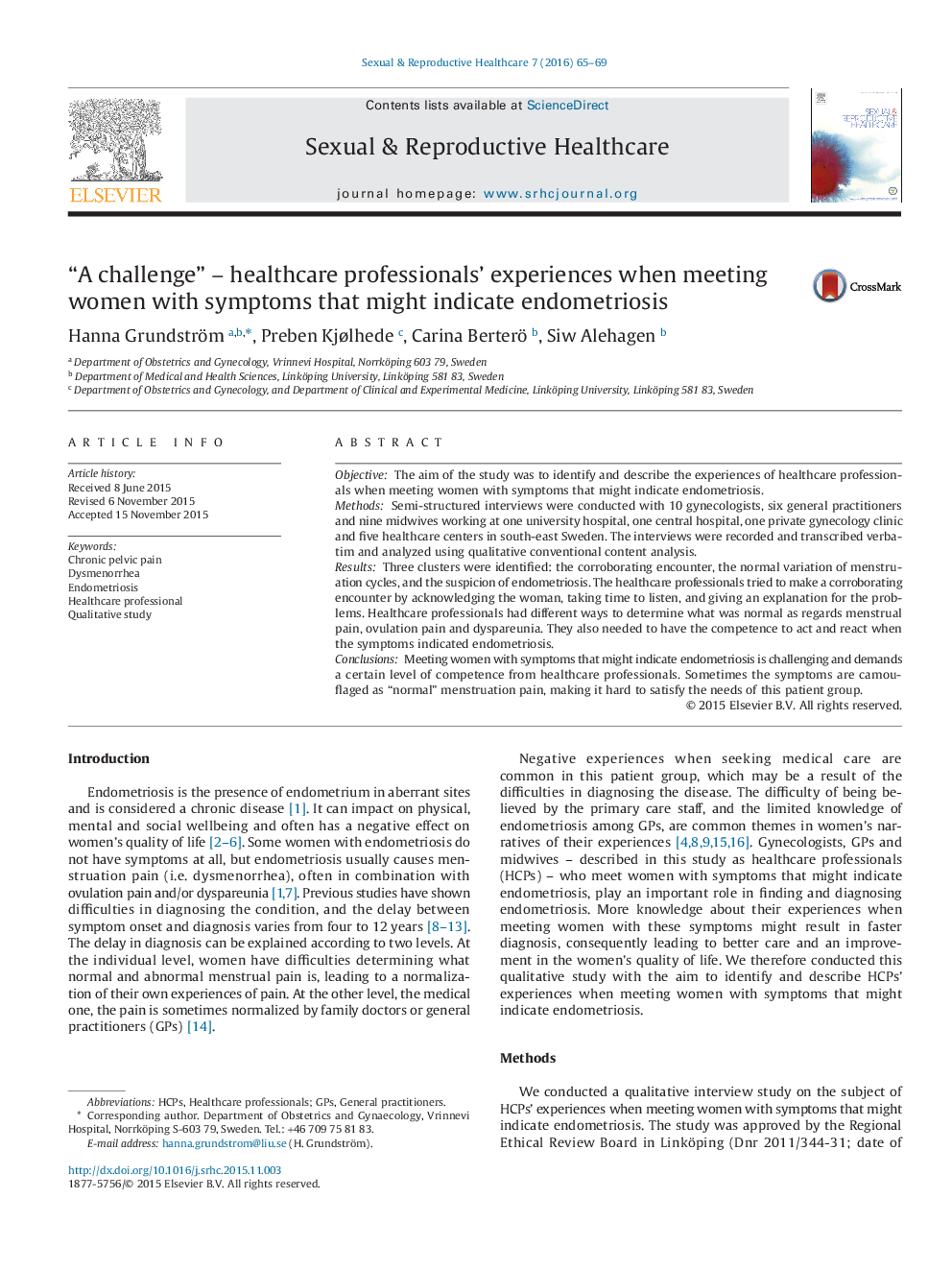| Article ID | Journal | Published Year | Pages | File Type |
|---|---|---|---|---|
| 5866094 | Sexual & Reproductive Healthcare | 2016 | 5 Pages |
â¢Professionals experience women with endometriosis symptoms as a challenging group.â¢The characteristics of the disease demand a high level of knowledge and experience.â¢Sometimes the symptoms are camouflaged as “normal” menstruation pain.â¢Professionals have different strategies to detect and elucidate the symptoms.â¢Professionals try to help women by establishing corroborating encounters.
ObjectiveThe aim of the study was to identify and describe the experiences of healthcare professionals when meeting women with symptoms that might indicate endometriosis.MethodsSemi-structured interviews were conducted with 10 gynecologists, six general practitioners and nine midwives working at one university hospital, one central hospital, one private gynecology clinic and five healthcare centers in south-east Sweden. The interviews were recorded and transcribed verbatim and analyzed using qualitative conventional content analysis.ResultsThree clusters were identified: the corroborating encounter, the normal variation of menstruation cycles, and the suspicion of endometriosis. The healthcare professionals tried to make a corroborating encounter by acknowledging the woman, taking time to listen, and giving an explanation for the problems. Healthcare professionals had different ways to determine what was normal as regards menstrual pain, ovulation pain and dyspareunia. They also needed to have the competence to act and react when the symptoms indicated endometriosis.ConclusionsMeeting women with symptoms that might indicate endometriosis is challenging and demands a certain level of competence from healthcare professionals. Sometimes the symptoms are camouflaged as “normal” menstruation pain, making it hard to satisfy the needs of this patient group.
